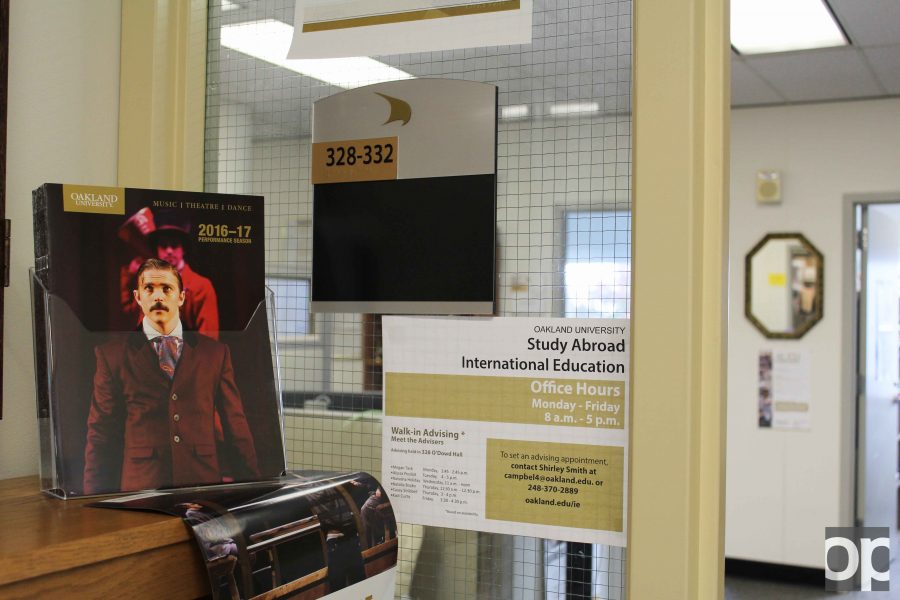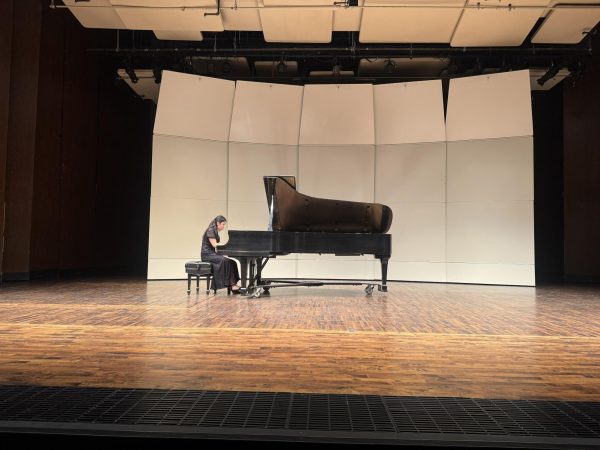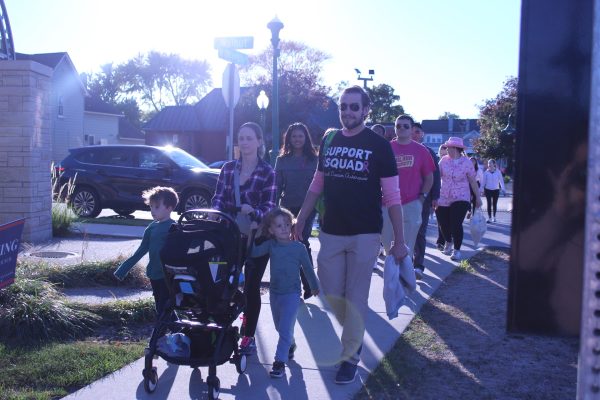Record-breaking year for international students
ISSO’s annual report shows that all of OU’s schools have recorded growth in international student enrollment, some more significant than others.
Oakland University has officially surpassed the milestone level of 1,000 international students and scholars this last 2015-2016 academic year, according to International Students and Scholars Office (ISSO) Director David Archbold. This year’s total is 1,022, a giant leap from 216 five years ago.
As Oakland’s student population is just over 20,000, these international students are starting to make up a sizable portion.
“With this growth, I think it is safe to say that we are transitioning from a regional university to a university with international distinction,” Archbold said.
The report also shows that the number of scholars, or international researchers and visiting professors, has gone down since 2010-2011, from 49 to 36. Many of them come to OU for its labs and faculty, working on projects and furthering their research, Archbold said.
Archbold said the decrease may be because of how long it takes the government to do security checks, as it sometimes takes up to two or three months. However, he hopes these numbers begin to increase soon.
The ISSO’s annual report shows that all of OU’s schools have recorded growth in international student enrollment, some more significant than others.
The School of Engineering and Computer Science dominates with 398 international students. Coming in second is the College of Arts and Sciences with 162.
However, growth across the board shows there is diversity in all schools.
The ISSO has been kicking things into high gear to make this happen.
The office has developed new programs with countries including Iraq and Saudi Arabia. These new programs have brought in more students.
In total, as of October, the office services international students and scholars from 55 countries. This year, the People’s Republic of China led with 259, followed by Saudi Arabia with 220 and India with 212.
A team of OU officials make annual trips to Washington, D.C., where they visit several embassies to discuss the advantages of coming to Oakland, emphasizing everything from the school’s safety to the various specialized academic programs.
OU is also a popular choice because of its affordability. For example, one year of study for a bachelor’s degree requires students to show they can pay $38,855, which includes things like medical insurance, tuition and books. This is compared to $100,000 at the University of Michigan, according to Archbold.
“We are very competitive in comparison to other schools in Michigan.”
As of spring 2015, Central Michigan University had 1,099 international students enrolled, according to its website. While Michigan State University had 7,568 in the fall of 2015, this was actually a decrease from the previous year.
“I expect that in the next couple years, we will exceed some of the other schools in the area in terms of our overall population of international students,” Archbold said.
The ISSO has many successful programs for international students.
One is the International Allies Organization, a student organization where Americans are matched up with international students. Participants can spend their time together however they want, from attending ISSO events to just coordinating times to meet and learn about each other’s countries.
Another opportunity is called the International Village, where two international and two domestic students can live together in the campus apartments.
“This way, students form relationships that last a lifetime, which can be hard to do in the classroom,” Archbold said. “It’s been a real point of pride to have at OU.”
There is also the newly-renamed Creating American International Relationships Program (CAIR). International students are matched with families of OU faculty or the community, doing activities to experience what America has to offer.
Alison Radell, assistant director of the ISSO, finds it very rewarding to see these students grow.
“It’s heart-warming to watch them get involved and blossom around campus.”
For these international people, Archbold refers to the office as their “home away from home.” As living in a new country can be challenging, ISSO is there to answer questions and advocate for them.
He laughed while recalling a student from Kuwait who had never seen snow before.
“He wanted me to explain what it felt like, and I said you need to open the freezer door and put your hand in.”
The student later sent Archbold a picture next to his first snowman, which was wearing a traditional Kuwait head-covering.
Radell said that everyone benefits from these international students.
“Internationalization and globalization is so prevalent in the working world of society these days,” she said. “Having our students be a part of the campus community and bringing the community into that international space really gives them that firsthand experience of what the world looks like.”
Archbold agreed.
“The more international students that we can recruit to Oakland, the more worldly our education because you get that different perspective of someone overseas,” he said. “It really helps to enrich our educational product.”
In the future, Archbold hopes to increase the numbers to between 1,200 and 1,500.
Radell said they also want to develop programs to engage the spouses and kids of those who travel here, as they may not have as much of a chance to experience American culture.
It may be easy to lose sight of America’s opportunities if one has always lived here.
There was once a student from Iraq who told Archbold that the beauty of America was that no one asked about things like his religion or family.
“He said it was such a freeing experience that people were only concerned about what he could do to better their company versus things that he had no ability to change.”
This really sets the U.S. apart.
“That’s what makes the United States unique to every country in the world—that you can come from anywhere in the world and be successful in the U.S.,” Archbold said.
Archbold hopes this milestone is only the beginning, and Oakland’s global population continues to climb.
“The international students and scholars at the ISSO represent the world,” Archbold said. “To me, that’s the ultimate diversity.”





